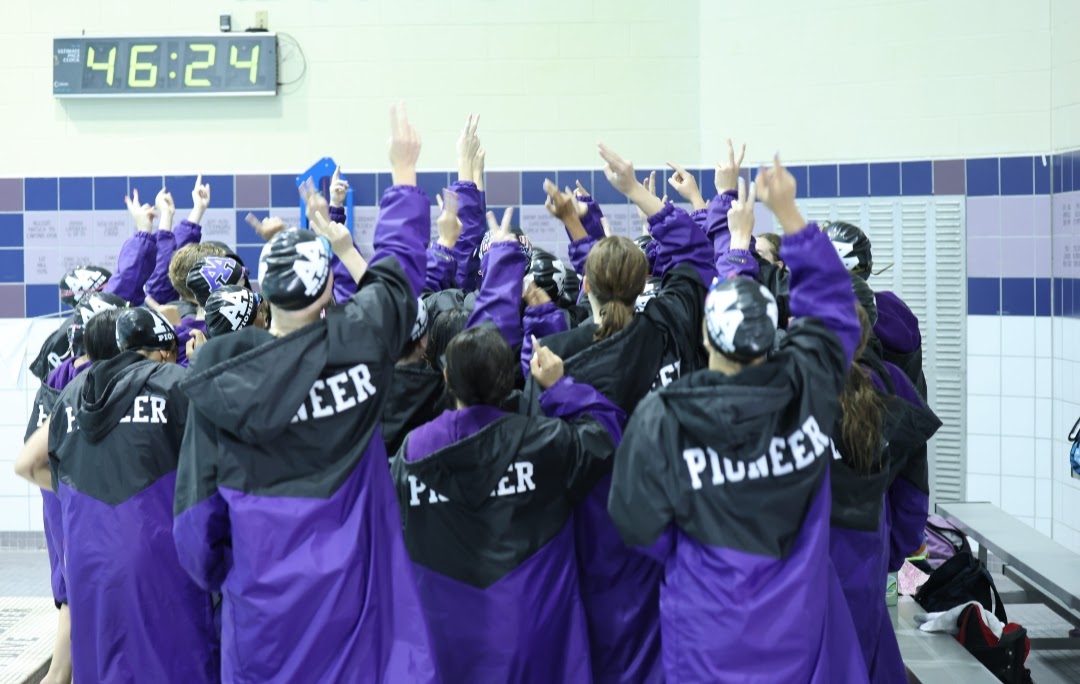Math Support: A place for help
January 21, 2020
At the start of every 7th block in Anne Thomas’ room students trickle in the door, often picking up snacks on the way. Maria Samuel-Aguilar makes her way through the rolling desks to the tall table at the back she has claimed since the beginning of the year. She grabs the math textbook she needs and hops up into the chair with her notebook, pencil case and snack. Next to her sits Ella Anderson who is already working on her homework.
As Samuel-Aguilar settles into her work, the final few students trickle in filling half of the seats. This is math support. A class for anyone who needs extra time or help with math. There are often students who are not in the class but who stop by for extra help or to make up a missed test.
And it is not only math that gets done here. “My math class doesn’t usually give out homework so I work on homework that is due the next day in my gender studies class or forensics,” Sophia Scarnecchia, a senior in the class said. “It helps because it is a quiet space where I can work on my projects.” This quite and and the additional focused piece of time is part of what makes math support so important for many. The other part is the help students receive in the class.
Samuel-Aguilar raises her hand to attract the attention of teacher Thomas. She is confused as to what sort of solution is required. Anderson, who is working on the same problem pauses to watch as Thomas goes through the equation on a portable white board. Thomas and Samuel-Aguilar take turns writing and Anderson asks questions until all feel comfortable with the problem. As Thomas moves to answer a different student’s question, she leaves Samuel-Aguilar and Anderson in the capable hands of Karenna Collins-Thomson, a senior and peer-educator in math support. Collins-Thomson watches as Samuel-Aguilar and Anderson attempt the next problem, gently asking questions to improve understanding and point out mistakes.
But when Collin-Thomson gets called away, Samuel-Aguilar and Anderson are left not getting the help they need. There simply are not enough peer-educators in the class. “We need more help in math support, not only to help the children that are in here that need more one on one help, but [to help] Anne herself,” Samuel-Aguilar said. “We come to math support because we need more academic support. But if we’re sitting in a classroom with 30 other people that need one on one help, and there’s only one teacher, realistically, we’re not getting the help that we need. And we’re wasting time sitting here.”
Beyond Thomas, there are three students and a former CHS math teacher who frequently come to math support to help where ever they can. Although some are not able to come every day, when there, they provide one-on-one help to hose who need it. The peer-eds are able to get credit as a TA.
“Math support during seventh block is the largest math support class,” Thomas continued. “We really need helpers. We also have math support classes first and third blocks, but I don’t think they need as much help because they don’t have as many students.” Any student is welcome to stop by to help or receive help although “it might be easier to see your individual teacher if they have a free seventh block because this class is pretty full”.
As seventh block comes to an end, Samuel-Aguilar asks her final question of the day to the nearest peer-educator. She packs her finished homework in her bag, closes the textbook, and walks out of Anne’s room, room 311.









